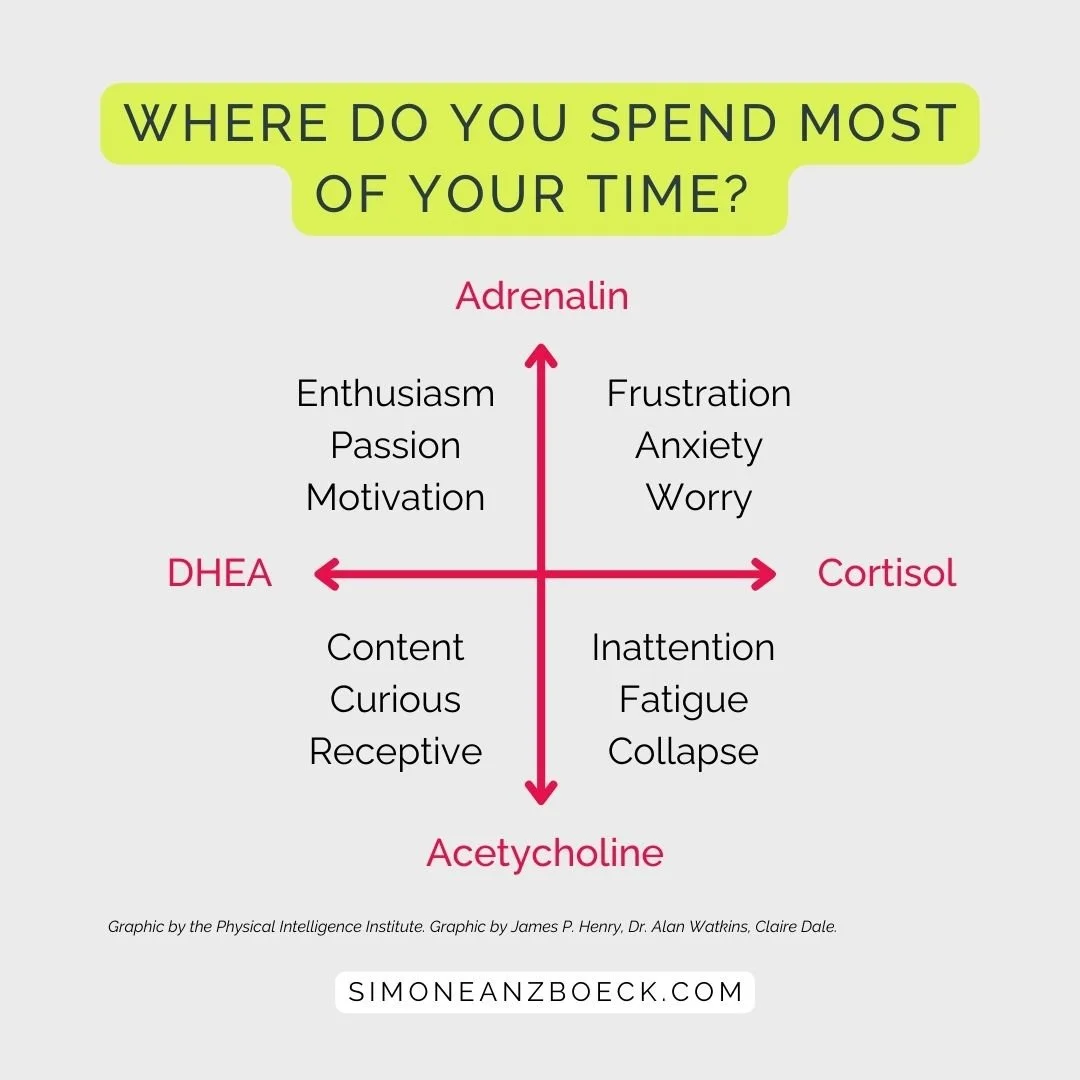Coaching with physical intelligence techniques
Look at this picture:
Where do you spend most of your time?
The picture shows the performance pathway. It can help you understand the chemical interaction and mood state.
It’s from my training as a Physical Intelligence coach, which uses the latest research and science-backed evidence and translates that into coaching techniques.
Physical Intelligence is the ability to detect and actively manage the balance of key chemicals in our bodies to achieve more, stress less, and live and work more happily.
I use the performance pathway with clients to help them identify the key practices to build their confidence, make better decisions, rise to challenges, be open to change .. and many more.
What comes first: Does your body’s chemistry affect your mood? Or does your mood affect your body’s chemistry?
Both. It’s all one interconnected system.
Right now, hundreds of chemicals (hormones and neurotransmitters) are racing through your body, bloodstream and nervous system. Those chemicals dictate how you think, feel, speak and behave. Yet, most of us operate primarily at the mercy of those chemicals – experiencing reactions, emotions and thoughts without realising we can strategically influence them.
Likewise, repetitive negative thinking can create a biochemical response that reinforces those feelings. It’s a continuous feedback loop.
What is physical intelligence coaching?
Physical Intelligence techniques have been used for decades in sports and the arts. Sports psychologists and top performers in sport and the arts use various methods to manage their "Winning Cocktail" and build peak performance. We can learn from their successes by acknowledging and embracing the impact of those techniques on our own personal and professional performance.
Here are only 3 (out of many) facts I work with using physical Intelligence.
We only need to regulate eight key chemicals to shift our physiology, move along the performance pathway (see graphic above), and influence our thoughts and mood.
We have three brains - gut, heart and head. You can guess which one is predominant in Western society. In Japan, the practice of haragei means “art of the stomach” and uses intuitive communication more.
We only need 0.2 seconds to react to something (triggered by physically encoded memories in our bodies). So the key to changing a reaction in the moment is to change your state before that moment.
There are hundreds of Physical Intelligence techniques, but they are all based on 5 basic and straightforward interventions:
Breathing patterns
Disruptive moments
Visualisation
Thought processes
Ways of interacting
How do you integrate physical intelligence coaching in your social impact coaching practice?
Coaching with your physiology is one component of my coaching approach. Learn more.
When a client comes to me with a specific request to work more with the body or is receptive to using techniques from physical Intelligence, there are three ways I integrate this:
Exercises we use in the session that bring immediate insight into a situation, challenge or decision you have to make.
Exercises we use in the session that bring you insights into a behaviour change you want to implement. You then use these insights to experiment with the new behaviour between our sessions.
Exercises I share with you after the session as an additional resource. You may take these away and return to them situationally or regularly. E.g. the recording of a specific disruptive movement or a visualisation.
Book a 45 min discovery call to discuss how coaching can support you. We’ll discuss your biggest challenge, what overcoming this might look like and if my coaching is a good fit - no strings attached.
